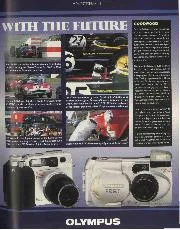
Goodwood
Of all the British tracks which blossomed in the postwar period it is only Goodwood which retains it's mystique and allure unsullied or tainted by the onslaught of commercialism and…
The Lotus Eleven was a runaway success for the Norfolk marque, both on the race track and in the marketplace. The car quickly became a staple of the up to 1100cc sports car classes, both nationally and internationally, and a total of 271 were built over the three-year production life of the car from 1956.
The Eleven — and it is correctly written out, even though the very earliest sales literature listed the car as a MkXI — took class wins at the Le Mans and Sebring enduros in ’57 and ’58 respectively, and was driven by the likes of Graham Hill, Mike Hawthorn, Ivor Bueb and Harry Schell. Just as significantly, the cars were raced weekend in, weekend out at club events around Britain, Europe and North America by amateur owners, and continued to do so deep into the 1960s.
It had all the hallmarks that have come to be associated with a Colin Chapman design: it was lightweight and aerodynamic. The dry weight of the Eleven was listed as seven-and-five-eighths hundredweight, or a shade under 390kg in new money. The low-drag aluminium body was the work of De Havilland aerodynamicist Frank Costin, who was also responsible for the shape of the Chapman-designed Vanwall VW2 grand prix car of 1956.
Chapman raided the British automotive industry’s parts bin to source much of the running gear that was hung off the Eleven’s panelled space-frame chassis. The front swing-arm suspension was culled from a Ford Prefect, the steering rack borrowed from a Morris Minor and the gearbox was sourced from either an Austin A30 or an MG Magnette.
“Most cars were sold as kits, to avoid crippling post-war austerity tax”
Available from launch in three distinct specifications, the majority of cars were sold in kit form simply to avoid the crippling purchase taxes of post-war austerity Britain. The top-of-the-range Eleven Le Mans – powered by an 85bhp Coventry Climax FWA engine – sold for £2155 as a turn-key racer, or £1437 as a ready to assemble kit.
There was also a 75bhp version of the same car (£1387 as a kit) and the Club spec, with drum rather than disc brakes (at £1083). The entry- level Sport specification was powered by the 1172cc Ford side-valve engine and had a live rear axle — sourced from the Austin Metropolitan — in place of the other cars’ semi-independent De Dion set-up. That version sold for £872.
The Le Mans name for the top-of-the-range car was something of a misnomer: it referred to the De Dion axle and disc brakes rather than where it could compete. The regulations for the 24 Hours decreed that the car must race with a full-width screen and a two-seater cockpit rather than the classic Eleven’s off-set single-seater bodywork.
Full independent front suspension was incorporated on the Series 2 car that came on stream from 1957. This version was also three inches longer in wheelbase thanks to the need to incorporate the Climax FPF Formula 2 engine in a small run of cars.
The Lotus Eleven now has a home in multiple historic sports racing championships from the Motor Racing Legends Stirling Moss Trophy to the Peter Auto Sixties Endurance series. Most active cars boast the De Dion rear end – even if they didn’t start life with one – while the 1500cc FWB engine is more common today than in period. Most of the bigger engines have been created out of blocks from the fire pumps that were the core business of Coventry Climax.
Provenance is key to values, although it is not unusual for cars to be racing sans chassis plate. The vehicle identification tag was mounted out on the front-right corner of the car and therefore easily went astray in an accident or the repairs that followed. Traceable history is just as important for this little car which helped set Chapman and Lotus on their way.
• Price new £2155 (assembled)/£1437 (kit)
• Price now £150,000-£250,000
• Engine Coventry Climax FWA 1.1-litre normally aspirated straight four
• Rivals Cooper T39, Elva Mk1
• Verdict A successful machine that was an important marker in the history of the Lotus marque